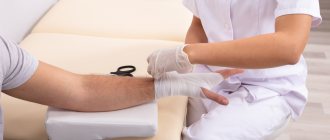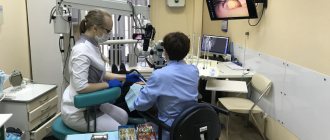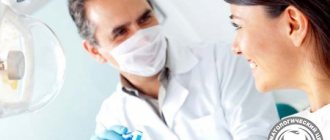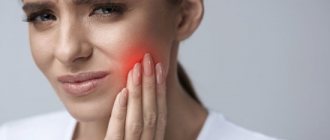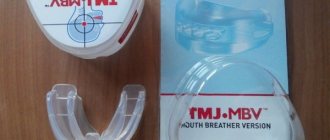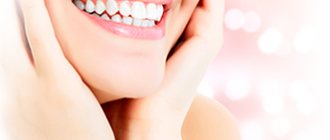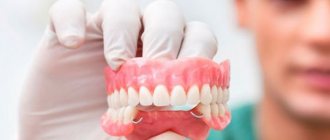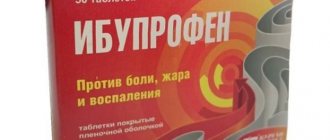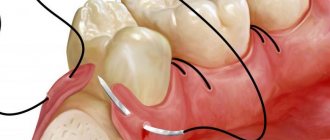Author: Trofimov Andrey Yurievich
What to do after tooth extraction? Every person has gone through this procedure in their life. Doctors always give recommendations, but more often than not, after the pain relief wears off, every second patient forgets about what was told to him in the dental chair. In most cases, after the anesthesia wears off, the pain returns with a vengeance. What should you do if after tooth extraction there is bleeding, the socket, gums become inflamed, or swelling occurs? How to avoid infection and a repeat unpleasant trip to the dentist?
General recommendations
Important restrictions after tooth extraction
Taking medications after tooth extraction
What else should you do after tooth extraction?
Hygiene rules after tooth extraction
What is normal after tooth extraction?
General recommendations
Extirpation ends by placing a cotton swab on the operated area. If the bleeding is minor, it can be removed after a few minutes. In case of increased bleeding, it is allowed to keep the cotton wool for up to half an hour; if the process continues, the doctor uses hemostatic drugs. When the cotton wool is held for too long, the blood clot may stick to it and fall out, and the socket with the bone will lose its natural protection from the external environment.
How to stop bleeding after tooth extraction at home:
- apply a special hemostatic sponge (sold in a pharmacy);
- make a tight swab from sterile gauze, apply to the hole and bite;
- if the problem is caused by increased blood pressure, then you need to take appropriate medications;
- use ice or frozen foods pre-wrapped in a towel as a cooling compress.
Smoking after tooth extraction is unacceptable, since cigarettes contain nicotine, which constricts blood vessels. As a result of this action, the cells do not receive the required amount of oxygen and nutrients, so the regeneration processes slow down, the risk of infection increases, scarring and improper tissue fusion are possible.
On the day of surgery, you should not rinse your mouth, engage in sports or other physical activity; it is best to go home from the clinic and rest. Routine oral hygiene or rinsing is not recommended.
In nutrition, preference should be given to soft, liquid and warm foods.
What medications are needed?
Antibiotics after tooth extraction are prescribed by the surgeon who performed the extraction. You can replace medications from the list with cheaper analogues, the main thing is that they have a wide range of applications, since there are different microorganisms in the mouth. Amoxiclav is often prescribed because it is effective and has a minimum of contraindications and side effects. The drugs are taken in the course determined by the doctor.
Anesthesia after tooth extraction lasts for several hours, after which pain appears, which can be eliminated with the help of analgesics. Anti-inflammatory drugs, for example Nimesil, and vitamins to strengthen the immune system can also be prescribed.
How to rinse your mouth after tooth extraction:
- chlorhexidine;
- a weak solution of potassium permanganate;
- furatsilin;
- miramistin;
- similar antiseptics.
In addition to pharmaceutical products, rinsing can be done with soda, saline solutions, decoctions of chamomile, sage, oak bark, calendula, and eucalyptus. They not only protect against infection, but also relieve swelling and accelerate tissue healing.
Temperature after tooth extraction is one of the possible symptoms, as tissues are injured and foreign elements penetrate the body. To improve your health, you need to take antipyretics.
THERAPEUTIC ACTION
Ketanov is a non-steroidal anti-inflammatory drug with systemic effects with a particularly powerful analgesic (pain-relieving) effect.
When administered, it has a triple effect on the body:
- relieves heat and inflammation;
- has an analgesic effect.
However, it is the super-powerful analgesic effect that allows this medicine to be used for unbearable toothache.
DOES KETANOV HELP FOR TOOTH PAIN?
The drug has a very powerful peripheral effect. It is this effect of the medicine that “eclipses” all its other qualities. Ketanov is a non-narcotic analgesic substance with an excellent analgesic effect.
Ketanov helps with toothache much more strongly than other drugs from the same group.
For example:
- butadione – 453 times;
- analgin – 350 times;
- nalgesin – 50 times;
- indomethacin – 5 times.
Obviously, the most powerful peripheral effect of Ketanov compared to other non-steroidal anti-inflammatory drugs. That is why this medicine is a powerful means of relieving various pains, including those caused by traumatic or postoperative conditions.
KETANOV'S WORK IN THE BODY
The medicine inhibits the activity of special enzymes, as a result of which the production of modulators of inflammation, pain and thermoregulation is suspended. The analgesic power of the drug is equal to that of morphine-like substances. On average, the onset of action of the drug is half an hour after intramuscular administration and an hour after using the tablets.
Ketanov does not cause:
- disorders in breathing or nervous system;
- the appearance of vomiting or nausea;
- urinary retention and bowel function;
- increased pressure;
- increased heart rate;
- drug addiction.
Ketanov is able to accumulate in the liver tissue and penetrate into breast milk.
It is excreted through the urine and partially through the intestines.
If your gums are inflamed
It is not always possible to avoid infection of the wound surface, especially when the patient neglects the advice of the dentist. In case of inflammation, you should consult a doctor for examination and identification of the causes of inflammatory reactions.
If the hole is not closed after tooth extraction, alveolitis develops. The natural plug can come off due to intensive rinsing, licking the wound with the tongue, resumption of bleeding and improper actions to stop it. Alveolitis is accompanied by acute pain syndrome. Not only the injured area may hurt, but also the throat, head, jaws, and neighboring teeth.
How long the gums heal after tooth extraction depends on various factors:
- complications of surgical intervention;
- the presence of inflammation or other complications;
- age criterion, the older the patient, the longer the healing and tissue restoration takes place;
- state of immunity, individual characteristics.
WHEN KETANOV IS CONTRAINDICATED
Despite its high effectiveness, ketans should not be used by people with a number of diseases.
This drug is contraindicated in:
- individual intolerance;
- bronchial and “aspirin” asthma, bronchospasms;
- impaired kidney or liver function;
- congestive decompensated heart failure;
- diseases of the hematopoietic system and bone marrow (including hemophilia);
- serious gastrointestinal problems (exacerbation of ulcerative pathology, cirrhosis, hepatitis);
- in the preoperative period (due to the real risk of bleeding);
- for polyps in the nose or paranasal sinuses;
- in conditions after a stroke.
The use of this medicine is limited to:
- in case of blood clotting disorders, it is necessary to control the level of platelets in the blood (especially after operations);
- use requires caution in case of hypertension, diabetes mellitus, lupus erythematosus, sepsis;
- careful use for people in professions or occupations that require special attention or speed of reactions (including drivers, representatives of dangerous professions, tourists when traveling difficult routes, etc.);
- restriction of use to patients of the older age group (over 65 years).
APPLICATION OF KETANOV IN CHILDREN'S PRACTICE, PREGNANT AND NURSING WOMEN
During pregnancy or lactation, as well as during childbirth, the drug is contraindicated for use. Ketanov should not be given to children for toothache. It is used only for adults (patients over 16 years of age). In exceptional cases, the medicine can be used to relieve severe pain in children from 2 years of age.
INTERACTION WITH OTHER SUBSTANCES
With the simultaneous use of ketanov and certain drugs, toxic effects on the body and increased side effects are possible.
Such drugs include anticoagulants (aspirin, heparin, etc.), lithium drugs, and other drugs with a similar effect.
The combination of Ketanov with other drugs requires consultation with a doctor. It is prohibited to use Ketanov with any type of alcohol. “Ketanov + alcohol” will deal a severe blow to your liver.
What and when to eat
During the rehabilitation period, food should be soft, mostly liquid, and have a comfortable temperature. How much you can’t eat after tooth extraction depends on whether there is heavy bleeding or not. If blood clotting is normal, then a protective clot is formed and securely attached within 2 to 3 hours. After this, the restriction is lifted. With complex extraction, the time can increase to 4.6 hours.
It is advisable to exclude spicy, sweet foods, carbonated drinks, alcohol, raw vegetables, fruits with a high acid content. Chewing is carried out on the opposite side of the jaw. It is better not to eat rough, hard food, as you may accidentally touch the wound.
2. After what time can you eat and drink?
After removal, you can drink water. After two hours you can eat. The limiting condition is not to chew rough food on the side of the extracted tooth in the first few days. Hard food can damage the blood clot, which is located in the socket and is needed for wound healing. If the patient experiences an acute feeling of hunger, then no one forbids eating cool yogurt or kefir. In the first days of healing of the hole, it is better to completely avoid eating rough, hard, solid foods, so as not to make strong chewing movements, as well as spicy, salty foods, so as not to irritate the oral mucosa. It is also important to monitor the temperature of food and drinks; they should not be too hot.
Oral hygiene
It is not carried out on the first day to exclude infection and accidental injury. Chlorhexidine can be used almost immediately after tooth extraction, as it does not cause side effects; the main thing is to rinse carefully and according to the instructions. Further hygienic cleaning can be performed once a day with a soft brush, carefully avoiding the surgical area.
Floss is also used to remove food debris from between teeth and a warm saline solution is used to rinse the mouth after each meal. Do not forget about cleansing your tongue, as plaque also accumulates on it, in which bacteria actively multiply.
Removal of sutures after tooth extraction occurs on the 7th - 10th day. By this time, the wounds have already healed and restrictions on hygiene procedures are lifted. Cleaning is carried out twice: in the morning and in the evening.
WHAT ARE THE ADVANTAGES OF THE DRUG
The main advantages of Ketanov are its following features:
- the ability to relieve severe pain of various origins, when other medications are helpless;
- minimum “side effects” when taken (compared to other painkillers);
- long-term analgesic effect (at least 6-8 hours);
- the possibility of abrupt drug withdrawal and the absence of addiction syndrome (withdrawal) even after a long course of administration (up to 6 months).
BY-EFFECT
Unfortunately, in some people this drug can cause a lot of unpleasant phenomena in the body. The most common of them include:
- dyspeptic symptoms (dry mouth, nausea or vomiting, inflammation of the stomach or exacerbation of ulcers, constipation or diarrhea, stomach pain);
- neurological changes (headache or dizziness, nervousness or excessive drowsiness, hyperesthesia of some parts of the body);
- from the ENT organs (sometimes it reduces hearing or provokes ringing in the ears, and can impair vision);
- therapeutic disorders (high blood pressure, slow heartbeat);
- from the urinary organs - swelling is sometimes possible.
Pathology and norm
With any invasive procedure, swelling occurs in the soft tissues. It goes away on its own within a few days. The same can be said about pain. Cheekbones, adjacent teeth, head, and neck may hurt. If after 3 or 4 days the symptoms do not disappear, but increase, then this indicates pathology.
What are the complications after tooth extraction:
- alveolitis, osteomyelitis, most often occurring with dry socket;
- inflammation near the seams;
- damage to the adjacent dental unit;
- perforation of the bottom of the maxillary sinus, if extraction is performed on the upper jaw;
- fracture of the alveolar process, sharp edges of the alveolus that injure soft tissues;
- neuritis of the inferior alveolar nerve;
- postoperative cyst;
- paresthesia, which is characterized by numbness, loss of sensitivity of the cheeks, tongue, jaw and other adjacent areas;
- ondogenic phlegmon, periostitis;
- a hematoma in the neck can occur in people suffering from arterial hypertension (blood leaks out of the vessels into the tissue);
- soft tissue abscesses.
Pus and flux after tooth extraction characterize an acute inflammatory process that requires urgent treatment. Purulent inflammation can occur with insufficient antiseptics during surgery or poor postoperative care, with a dry socket, when food particles get into the hole. A new surgical operation is required to remove necrotic masses.
When to see a doctor:
- on the second and third days the swelling does not subside, but the cheek continues to swell;
- the pain becomes more intense and is difficult to eliminate with medications;
- the high temperature lasts for several days, normally it should decrease within 24 hours;
- no appetite, nausea, weakness;
- when pressing on the gum, pus is released, and its edges turn red;
- when palpating the hole with the tongue, no blood clot is detected.
If inflammatory processes are started, this can lead to the melting of bone tissue, an abscess and the spread of infection.
How long does it take for a tooth to heal after extraction?
If the extirpation is successful and there is no bleeding, then on the second or third day the hole becomes covered with a grayish coating, and by the end of the week it becomes bright pink. When pressing on the gum, the exudate does not come out. The swelling completely subsides and the pain goes away. The processes of restoration of soft and bone tissues begin.
What not to do on the first day so as not to damage the formed clot:
- rinse your mouth intensively;
- lick the hole;
- blow your nose;
- spit;
- brush your teeth.
After two weeks, the mucous membrane acquires a healthy color, the hole is not visualized as a separate part, since by this time the epithelial layer is completely restored.
How long a wound heals after tooth extraction depends on the presence or absence of complications. If everything is in order, then after about a month the replacement of the void in the socket with bone and connective tissue is almost complete. We can talk about complete healing after 3 or 4 months. By this time, a smooth surface has formed in place of the removed dental unit, which does not in any way remind of the operation performed.
6. Medications after removal.
After the procedure, the doctor prescribes a number of medications to take. Under no circumstances should you take any medications on your own, without consulting a doctor.
Painkillers should be taken in case of pain, at intervals and in the amount recommended by the doctor. Each case is individual; it happens that the patient does without taking painkillers.
Antibiotics. In some cases, after removal, antibiotics are prescribed for 5-7 days. As a rule, these are situations when the doctor removes a tooth in the stage of inflammation, complex extraction or removal of several units of teeth. Only a specialist surgeon decides whether to take antibiotics or not.
Antihistamines. Reduces the likelihood of swelling.
Antiseptics. Used as a rinse. BUT, remembering that rinsing movements are prohibited in the first days. A small amount of solution is taken into the mouth and simply held in the mouth, then calmly spit out. Such baths must be done if the tooth was removed during the inflammation phase, if the flux was exposed, if there are teeth affected by caries in the oral cavity.
